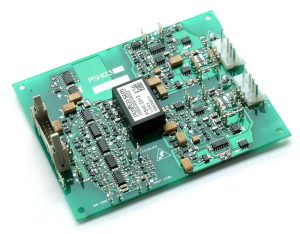Cleaning electronic components is a delicate but necessary task to ensure optimal performance and longevity. This guide will provide you with the essential methods and precautions for effectively cleaning different types of contaminants from your components.

Εισαγωγή
Cleaning electronic components can be challenging. The selection of appropriate cleaning agents and methods is crucial to avoid damage. This guide outlines the proper techniques for cleaning various types of contaminants from your electronic components.
Water
Water can be useful for cleaning certain components, but caution is needed. Most VLSI components are safe to immerse in water, while components with chipsets and mechanical parts should avoid water exposure. Water can seep into crevices, causing corrosion and potential short circuits.
Use de-ionized or distilled water instead of tap water, as tap water contains minerals that can create further issues.
Alcohol
Isopropyl alcohol is the preferred choice for cleaning electronic components. It evaporates quickly and can dissolve contaminants that water cannot. However, it still contains water, so caution is necessary.
While some printed circuit boards (PCBs) can be rinsed with alcohol, it is generally recommended to use a cotton swab dampened with alcohol. Apply the alcohol with the swab, then remove it using a piece of fabric and a brush to reach less accessible spots.
Acetone
Acetone is not recommended for cleaning electronic components as it can dissolve polystyrene and other materials used in PCBs and components that are subjected to heat.
Compressed Air
Compressed air is effective for removing dust and dirt. Minor grime or corrosion can be spot-cleaned, while significant corrosion should be treated with baking soda.
When using compressed air, you may need to remove covers to access certain areas. Keep the nozzle a few inches away from the parts, except for exhaust fans or PCBs where you can get closer. Spray in short bursts and keep the canister upright.
Brushing
A small, delicate brush can be used to remove dirt and dust from circuit boards. A horsehair paintbrush is particularly well-suited for this task. This method is effective for dry contaminants.
Specialty Cleaning Agents
For more stubborn contaminants, specialty PCB cleaning agents are available. Ensure the cleaner is not too harsh by testing it on an old board first. These agents are tailored to specific contaminants and can be more effective than general-purpose cleaners.
How to Clean Grime from Circuit Boards
Grime, flux, or oil can create a sticky film on circuit boards, attracting more dust and dirt.
- Isopropyl Alcohol: Dip a cotton swab in 90%-100% isopropyl alcohol, ensuring it is only lightly damp. Gently brush the swab across the grime to dislodge it. Allow the alcohol to dry completely before use.
- Demineralized Water: Swab the board with a minimal amount of demineralized water. Ensure the board is thoroughly dried before use.
- Specialty Cleaners: Use PCB cleaning agents specific to the contaminants. Test the product on an old board first to ensure it is not too harsh.
How to Clean Corrosion from Circuit Boards
Corrosion, often caused by moisture or battery acid leaks, can be challenging to clean. If other methods fail, use baking soda.
Mix baking soda with water to form a runny paste. Soak a cotton swab in the mixture and gently apply it to the corroded areas of the PCB. Allow the paste to dry for 24 hours. Then, use a cotton swab dampened with isopropyl alcohol to brush away the dried paste and corrosion.
Συμπέρασμα
These methods for cleaning electronic components, when used correctly, can help maintain their performance and extend their lifespan. By choosing the appropriate cleaning agents and techniques for each type of contaminant, you can ensure your electronic components remain in optimal condition.
Feel free to contact us or send us an email to [email protected]
